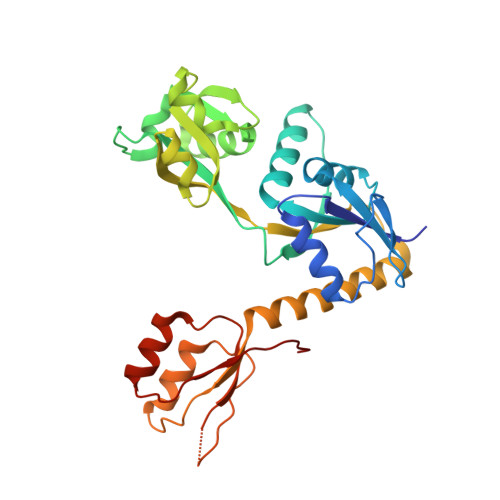The Structure of Escherichia Coli ATP-Phosphoribosyltransferase: Identification of Substrate Binding Sites and Mode of AMP Inhibition
Lohkamp, B., Mcdermott, G., Campbell, S., Coggins, J.R., Lapthorn, A.J.(2004) J Mol Biol 336: 131
- PubMed: 14741209
- DOI: https://doi.org/10.1016/j.jmb.2003.12.020
- Primary Citation of Related Structures:
1H3D, 1Q1K - PubMed Abstract:
ATP-phosphoribosyltransferase (ATP-PRT), the first enzyme of the histidine pathway, is a complex allosterically regulated enzyme, which controls the flow of intermediates through this biosynthetic pathway. The crystal structures of Escherichia coli ATP-PRT have been solved in complex with the inhibitor AMP at 2.7A and with product PR-ATP at 2.9A (the ribosyl-triphosphate could not be resolved). On the basis of binding of AMP and PR-ATP and comparison with type I PRTs, the PRPP and parts of the ATP-binding site are identified. These structures clearly identify the AMP as binding in the 5-phosphoribosyl-alpha-1-pyrophosphate (PRPP)-binding site, with the adenosine ring occupying the ATP-binding site. Comparison with the recently solved Mycobacterium tuberculosis ATP-PRT structures indicates that histidine is solely responsible for the large conformational changes observed between the hexameric forms of the enzyme. The role of oligomerisation in inhibition and the structural basis for the synergistic inhibition by histidine and AMP are discussed.
Organizational Affiliation:
Division of Biochemistry and Molecular Biology, Institute of Biomedical and Life Sciences, University of Glasgow, Glasgow, G12 8QQ, Scotland, UK.
















